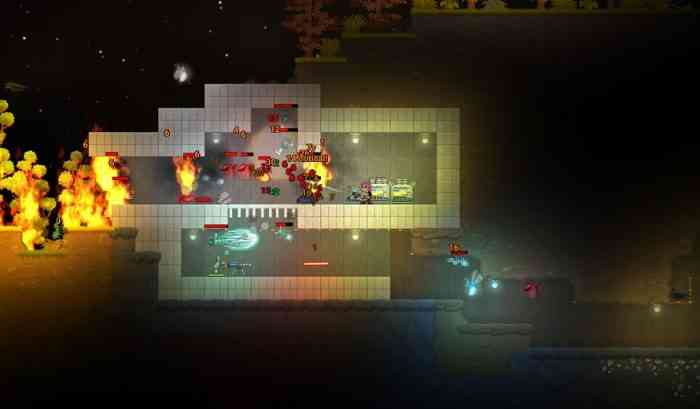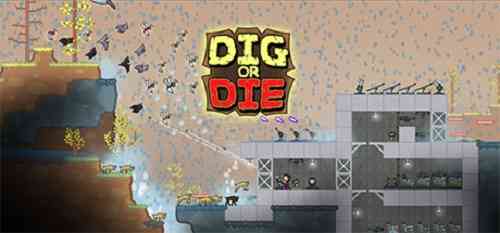Dig or Die Review
When it was first released, Terraria was criticized and dismissed by many as being nothing more than a 2D Minecraft clone. Its mechanics of gathering materials in order to craft tools, items, and structures while fighting monsters are similar, and the simplistic art style didn’t help its case. However, those who have played both Minecraft and Terraria will tell you that they are incredibly different games with very different focuses. With that in mind, I went into Dig or Die with my attention largely directed toward how the game differentiates itself from its easiest point of comparison: Terraria.
There are a few interesting differences, like collecting materials with a sci-fi vacuum rather than a pickaxe, a strong emphasis on building a home security system rather than making due with any hole with a door, and each type of monster only storming your home at night after you’ve killed at least one of them in the wild (mother nature takes her revenge). Unfortunately, there are some differences that contribute to the game in a less positive ways, such as blocks only being able to support a certain weight, monsters with not only a remarkable propensity for but also frustrating proficiency in destroying anything that keeps them from murdering the protagonist, and rainfall that would give the Amazon wet season a complex. I would like to note that these more bothersome concepts do not feel out of place, and they do not feel bad in a conceptual sense. Rather, I feel that it is an issue of polish and execution.
Statics and Equilibrium
Take the issue of blocks only being able to support a certain weight. In theory, a use of weight and physics that forces players to be creative in their designs is a really cool idea, but it’s not implemented in a way that lends itself naturally to simpler designs as well as more complex ones. If the developers want to place such an emphasis on physics for building, then it’s necessary to 1) make sure the physics actually make any intuitive sense (ahem, horizontal forces don’t work that way), 2) understand and account for the differences between compression and tension forces, and, most importantly, 3) ensure that the player can easily build what they need to build without needing to take a university statics class. Basically, if they’re going to nit-pick how a player builds their home, they had better nit-pick correctly, and whatever nit-picking is left should not get in the way of the player having fun.
The real joy of the game is the danger of the night. Tons of games have the night as the time the monsters come out, kill you, eat your brains, kidnap your wife, and raise your children as their own, but Dig or Die brings it to the next level. Dig or Die takes the night and has the monsters come busting down your doors like Jehovah’s Witnesses on speed. They will do whatever it takes to kill you. They’ll pulverize your walls, risk drowning, and dig from every direction, taking whatever route they can find that will lead them to you. As a result, a major part of the game consists of building a fortress to defend yourself against the savage armies of the night. Build massive moats, wait twelve seconds for the rain to fill them, grow your arsenal of plasma and laser weapons to blast monsters to kingdom come, lay traps, forget that you also need to be able to get into and out of your own house, and rework your plans.

Aside from those differences, the game… is basically Terraria. Unfortunately, the game doesn’t have the massive variety and polish of Terraria’s crafting system, doesn’t have the interesting biomes of Terraria, doesn’t have the crazy enemies of Terraria, and it doesn’t make allusions to Lovecraftian horror. That isn’t to say Dig or Die isn’t fun. It is. I had a legitimately good time playing it, and that should mean something. Nobody who loves games hates games as much as I do. The only issue is that everything about Dig or Die reminds me of the better game that so obviously influenced it. I would do something in-game and think either “Oh, yeah, Terraria did that too,” or “Oh, yeah, Terraria did that this way.” Many of Dig or Die’s good traits are shared with Terraria but with less polish. For the game to stand alone as something more than a copycat (and a copycat that’s more expensive than the game it’s copying at that), it needs to improve and capitalize on issues I talked about before: things like the building physics, the ability of monsters to break through the walls to get to you, and the absurdity of the rain. Those unique characteristics are what make the game stand out, and giving those unique characteristics some polish is what could make a good game great.
**PC Key provided by the publisher**
The Good
- Cool home defense focus
- Space… Vacuum
- Great concepts for physics-based construction
The Bad
- Novel ideas lack polish
- A bit too similar to Terraria

